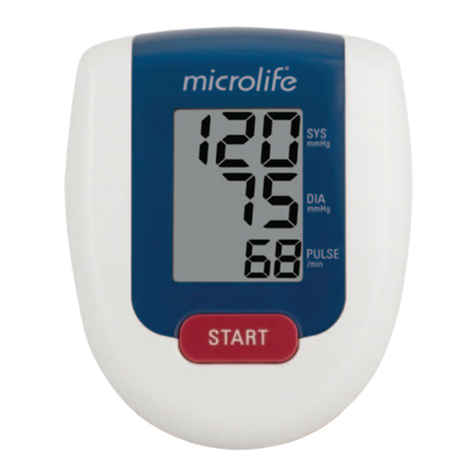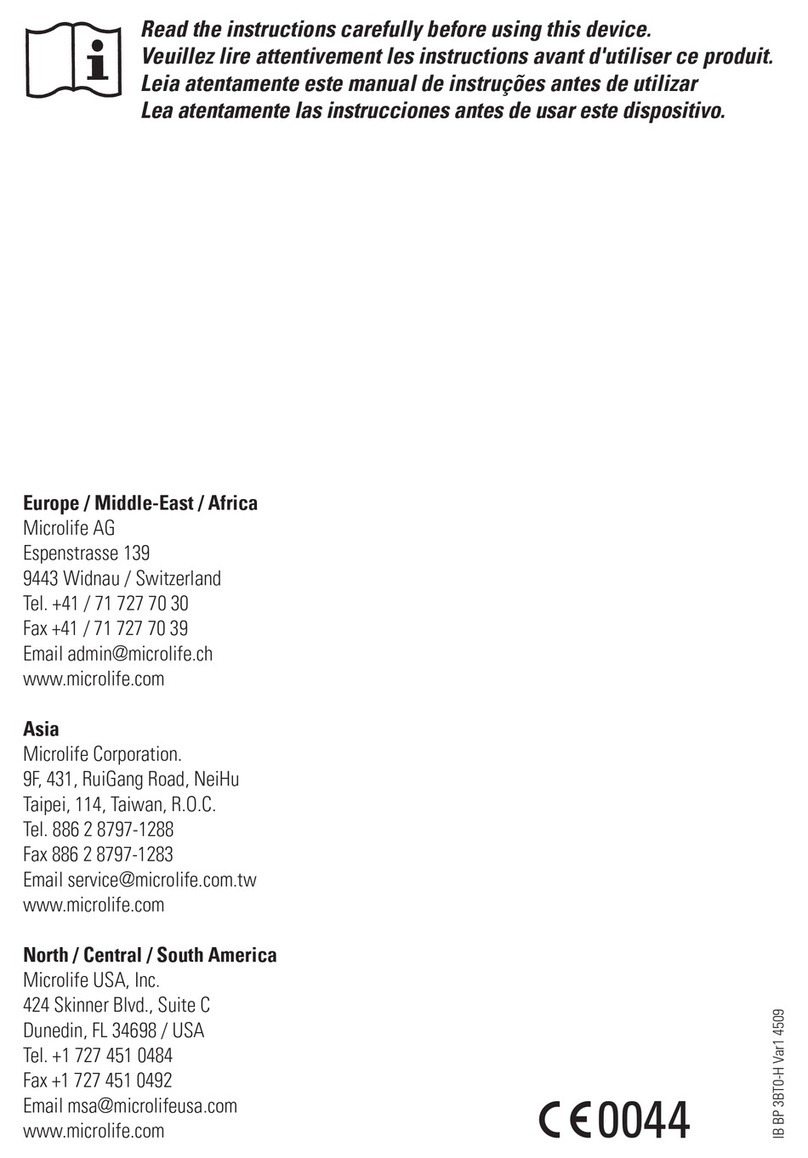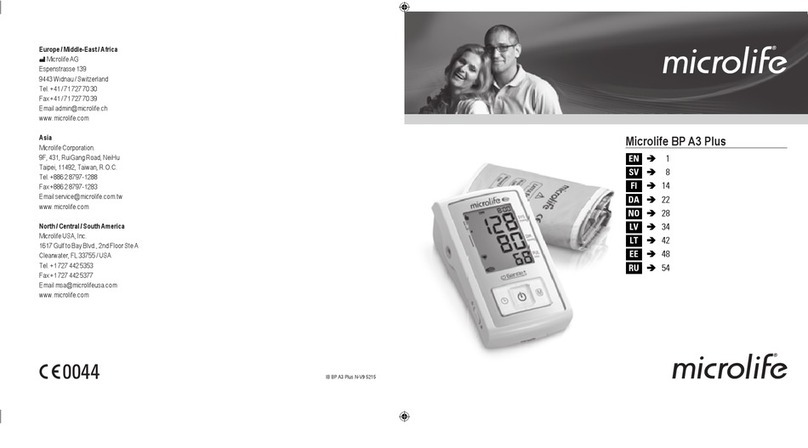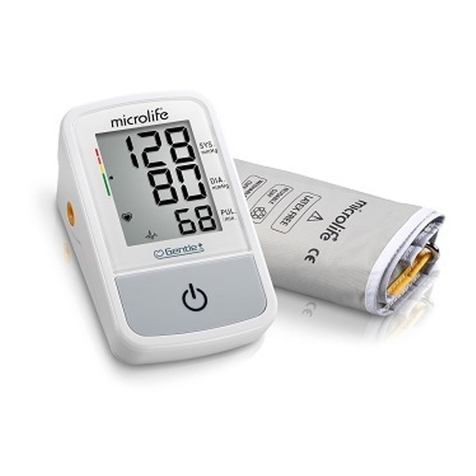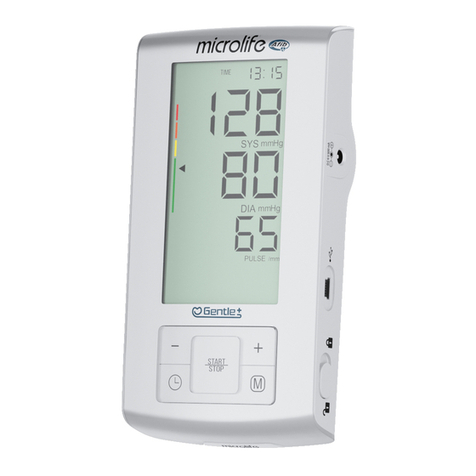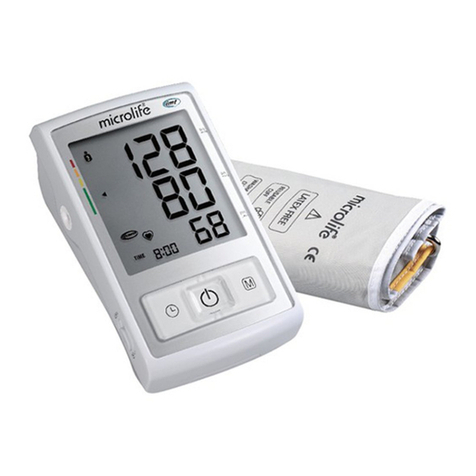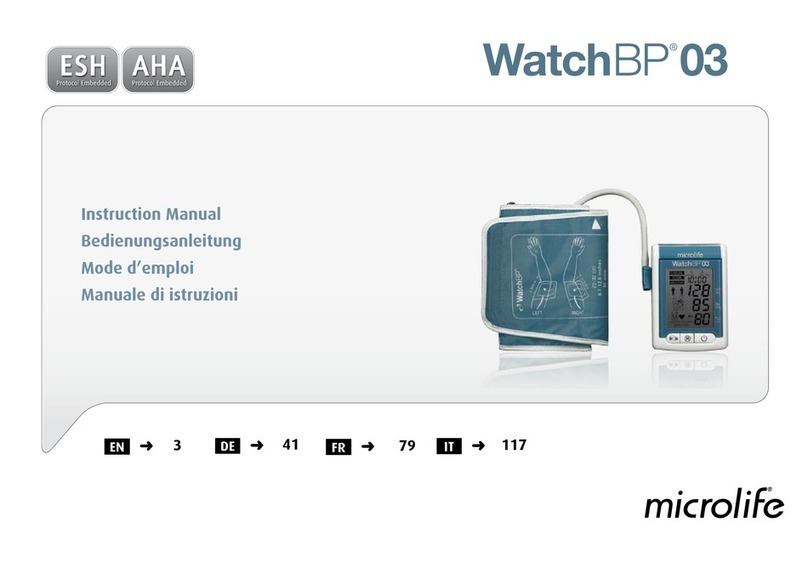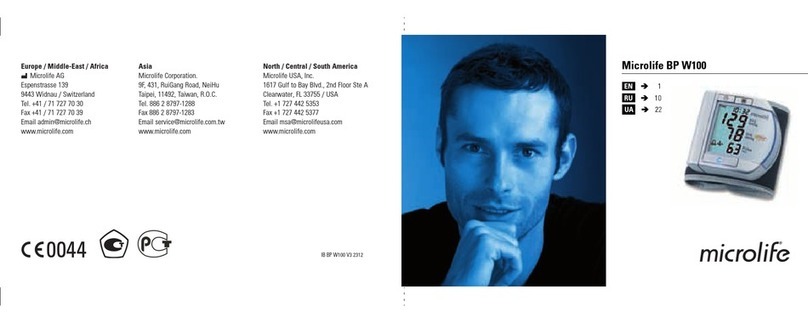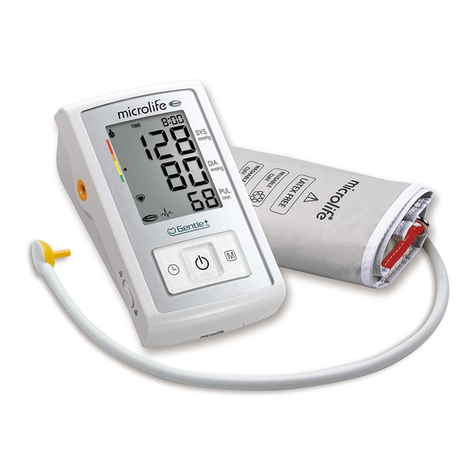
2
The Microlife Upper Arm Automatic Digital Blood Pressure and Cardiovascular Screening Monitor Model WatchBP Ofce
Vascular (TWIN200 VSR) is a non-invasive digital blood pressure device using the oscillometric technique and an upper-
arm blood pressure cuff to measure systolic and diastolic blood pressures, pulse rate, mean arterial pressure (MAP) for use
in adults and paediatrics (but not neonates) with arm cuff circumference sizes ranging from 14-52 cm (5.5-20.5 inches).
The device screens for the presence of atrial brillation during measurement.
The device can accurately measure blood pressure in patients with end-stage renal disease, diabetes, and pregnancy
(including those with known or suspected pre-eclampsia).
A recommended test for diagnosing Peripheral Artery Disease (PAD) is performing ankle-arm measurements to assess the
ankle-brachial index (ABI). The device has proven to be a fast, easy, and reliable alternative for PAD screening and has been
clinically validated when compared against a manual Doppler device [1].
The device also provides a user-friendly and more reproducible cuff-based brachial-ankle pulse wave velocity (PWV)
measurement method to evaluate arterial stiffness in clinical practice [2].
The device provides aortic blood pressure parameters, including central systolic blood pressure (cSBP), central pulse
pressure (cPP) and central diastolic blood pressure (cDBP), non-invasively through the use of a brachial cuff. This was
validated against invasive blood pressure measurement and showed that the device determines central blood pressure
measurement with high accuracy [3].
The memory data can be transferred to the PC running the WatchBP Analyzer software by connecting the monitor via USB
cable or Bluetooth.
The device is meant for use by healthcare professionals in clinical practice.
Indications for Use
WatchBP product support: https://www.microlife.com/professional-products
WatchBP Software support: https://www.microlife.com/support/software-professional-products
Developers support: https://www.microlife.com/developers1
1. Kollias, A., et al., Automated determination of the ankle-brachial index using an oscillometric blood pressure monitor: validation vs. Doppler
measurement and cardiovascular risk factor prole. Hypertens Res, 2011. 34(7): p. 825-30.
2. Kollias, A., et al. Automated pulse wave velocity assessment using a professional oscillometric ofce blood pressure monitor. J Clin
Hypertens. 2020;00:1–7.
3. Cheng, H.M., et al., Measurement accuracy of a stand-alone oscillometric central blood pressure monitor: a validation report for Microlife
WatchBP Ofce Central. Am J Hypertens, 2013. 26(1): p. 42-50.
Contra-indications
• The device is not intended for measuring blood pressure in patients less than 3 years of age ( infant or neonates).
• The device measures brachial blood pressure using pressured cuff over upper arm. If the arm or leg to be
measured have any injuries (e.g. open wounds) or conditions (e.g. intravenous drip) or has stents implanted
making it unsuitable for surface contact or pressurization, do not use the device.
• The device is not intended to measure pulse rate to check the frequency of a pacemaker.
• The application of the cuff and its pressurization on any limb where intravascular access or therapy, or an
arterio-venous (A-V) shunt is present because of temporary interference with blood ow could result in injury to
the patient.
• Avoid taking measurements on the arm on the side of a mastectomy or lymph node clearance.
• Avoid taking measurements of patients with diseases and environmental conditions that lead to incontrollable
motions (e.g. trembling or shivering), or it may cause inaccurate measurements.
Precautions
• Remove the cuff or disconnect the cuff connector to release the cuff pressure if the device is not working
properly or the cuff keeps inflating.
• Avoid situations of extended cuff pressurization beyond normal measurements.
• If any serious incident occurs while using the device, please inform Microlife.
• DO NOT use this device in proximity of high frequency (HF) surgical equipment, magnetic resonance imaging
(MRI) equipment, and computerized tomography (CT) scanners. This may cause malfunctioning of the device.
• DO NOT use cuffs or cuff connectors of other manufacturers devices with this device.
• DO NOT use this device on patients aged less than 3 years old.
• DO NOT use the device if you think it is damaged or if anything appears unusual. Remove the cuff or disconnect
the y connector to release the cuff pressure if the device is not working properly or responding while keeping
the cuff pressure.
Side-effects
In rare cases, slight bruising may result after measurement due to pressurization of the arm and leg.
